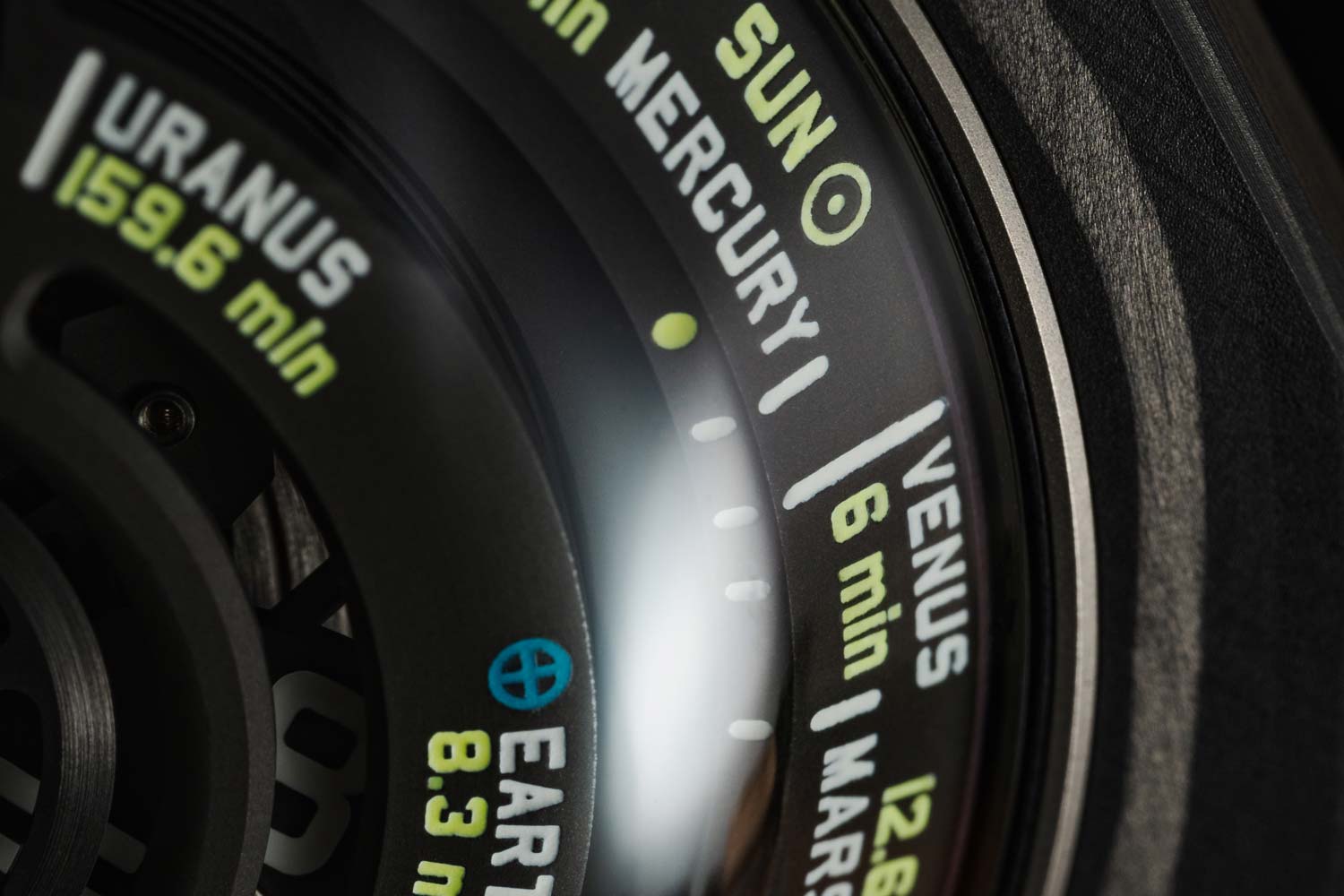News
Urwerk Gives its Best-Selling UR-100V a Cosmic-theme Makeover
News
Urwerk Gives its Best-Selling UR-100V a Cosmic-theme Makeover
As a result, the UR-100 has undergone several iterations to cater to the diverse tastes of collectors, offering a range of materials and dial colors. However, the latest iteration introduces something new to the display. The UR-100V Lightspeed incorporates, for the first time in the lineup, a depiction of the time needed for sunlight to reach each planet in the solar system.

Travel time display
However, the latest Lightspeed eliminates the twin astronomical display present in earlier UR-100 models. This feature indicated the distance traveled by Earth during its rotation on its own axis every 20 minutes (about 555 km) and the distance traveled by Earth as it orbits the Sun every 20 minutes (about 35,700 km). This information was conveyed through the movement of the pointer on the wandering hour disc, which rotates around the entire dial. Conveniently, the cutout is sized so that the pointer takes exactly 20 minutes to pass through it.
Although the twin distance display is being phased out, Urwerk has introduced new astronomical information on the dial. Featured on the Lightspeed model is the time required for light to travel from the sun to each planet in the solar system. This information is determined by calculating the distance between the sun and each planet, taking into account the speed of light, which is approximately 299,792.458 meters per second – the fastest speed achievable in the universe. For instance, it can be determined that, on average, sunlight takes approximately 8.3 minutes to reach Earth.


Controlled winding rate

Urwerk UR-100V Lightspeed
Functions: Hours and minutes
Case: 43 x 51.73 x 14.55 mm; carbon and DLC-coated titanium; water resistant to 50 m
Strap: Red rubber strap with folding clasp
Availability: At Urwerk retailers
Limited edition: 50 pieces
Price: CHF 65,000











